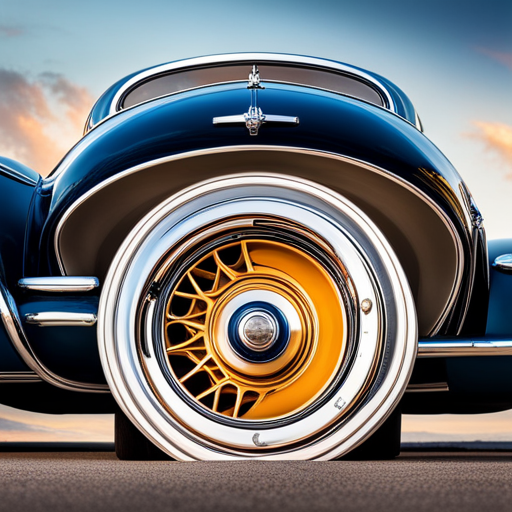A Brief History of Hubcaps: From Classic to Modern Designs
Feb 05, 2024

Hubcaps have been an integral part of the automotive industry for many decades. These small, round covers have not only served a functional purpose but have also gone through various transformations in terms of design and material. From classic to modern, hubcaps have made their mark on the wheels of countless vehicles. Let's take a journey through time and explore the fascinating history of hubcaps.
Before we delve into the history, it's important to understand the primary purpose of a hubcap. Hubcaps are designed to cover the central portion of a wheel, known as the hub, and provide protection to the lug nuts and bearings. In addition to their practical function, hubcaps also add a touch of style to a vehicle's appearance, making them a popular choice among car enthusiasts.
Hubcaps, in one form or another, have been around since the early days of the automobile industry. Early hubcaps were made of brass and featured intricate designs that added a touch of elegance to any vehicle. These hubcaps were hand-crafted, reflecting the craftsmanship of the era. As the automotive industry advanced, hubcaps started to be mass-produced, with manufacturers using different materials such as steel and aluminum.
During the mid-20th century, hubcaps took on a more streamlined and minimalist design. This period saw the rise of the iconic moon hubcaps, which featured a simple circular shape with a polished chrome finish. These hubcaps became a symbol of the American automotive industry and were widely used in the 1950s and 1960s.
As the automotive industry entered the modern era, hubcap designs started to become more diverse and experimental. The introduction of plastic materials allowed for new shapes, colors, and patterns. Many car manufacturers began incorporating hubcaps with their brand logos or emblems, further enhancing the personalized touch of a vehicle's appearance.
In recent years, hubcaps have evolved even further, adapting to the demands of modern consumers. With the rise of alloy wheels, hubcaps have taken on a different role. Wheel covers, also known as hubcap alternatives, are used to cover the entire wheel, giving the appearance of high-end alloy wheels at a fraction of the cost. These wheel covers often mimic the look of specific wheel designs, ranging from sporty to luxurious.
Chrome wheel skins and wheel simulators have also entered the market and gained popularity. Chrome wheel skins are made of high-quality plastic or metal and are designed to cover the entire wheel, giving it a sleek, chrome finish. Wheel simulators, on the other hand, are mainly used for heavy-duty commercial vehicles and replicate the appearance of larger, more robust wheels.
As we can see, hubcaps have come a long way since their early days. From their elegant and hand-crafted beginnings to the diverse and modern designs of today, hubcaps have remained an essential accessory for any vehicle. They not only provide functionality but also add a touch of style and personality to cars, trucks, and vans.
At our premier hubcap and wheel cover supply store, we have been keeping up with the ever-changing world of hubcaps since 1979. With a wide range of options, from classic designs to modern alternatives, we strive to provide our customers with the highest quality products for their vehicles. Whether you're looking to enhance the appearance or protect the functionality of your wheels, we have the perfect hubcaps, wheel covers, hub caps, chrome wheel skins, or wheel simulators for you.
So, the next time you see a vehicle out on the road with stylish hubcaps or eye-catching wheel covers, remember the rich history behind these small but significant accessories. Hubcaps have come a long way, and their journey continues as they adapt to the ever-evolving automotive industry.









































